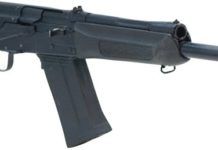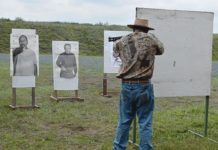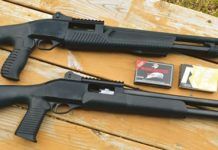The pump action is a very popular shotgun type, mainly for its ease of operation and its ruggedness. While a self-loader may be a bit faster in trained hands, the point is debatable. Expensive autoloaders are reliable, but in the end a dirty or well-used pump is always more reliable than a dirty autoloader. We recently tested two affordable pumps-the Mossberg Maverick is a cut-down version of the Mossberg 500, and the H&R Pardner is a basic copy of the Remington 870 design beneath the humpback receiver. Our raters are familiar with the Mossberg 500 shotgun and the Remington 870, but we had to cast aside any preconceived notions of the base platforms because the Maverick and Pardner we were testing were completely different from their stablemates. They were made to sell and to offer reasonable performance. The shotguns tested had similar features, and there was little to recommend one over the other as far as the specification sheet went-even the length of pull and drop are similar. But once the shooting began, we began to form opinions on each shotgun. We took turns quickly mounting each shotgun and firing. When firing a shotgun, your eye is the rear sight and handling is everything. A rough action or problems with the hardware detract from smoothness of motion and ergonomics.
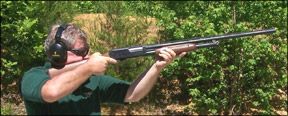
We bought the guns at Academy Sports, a giant sporting chain that offers rifles, pistols, and shotguns as well as other sporting goods. We were surprised to see these two pump-action shotguns listed for less than $200 in an Academy Sports sales paper.
When we saw the sale sheet in the Sunday paper, the Maverick was listed at $170 and the Pardner at $180-not much difference. However, we waited two weeks to purchase the shotguns and found that the Mavericks every day price is $170, while the Pardner was off sale and commanding $200-an 18% difference. The helpful clerk assured us that the Pardner would go back on sale within a few weeks, but we went ahead and purchased the Pardner at full price. Watch the sale sheets, but the Maverick, it seems, is always at the lower price, even when both are on sale.
Our team gathered and shot the guns using 2.75-inch Winchester Super Target loads (1-ounce charge of No. 8 shot, 2.75-dram equivalent, 1180 fps muzzle velocity) and also a new steel trap load, the Winchester Xpert Game/Target load WE12GT7, a 2.75-inch 12 gauge with 11⁄8 ounces of No. 7s, Max dram, developing 1280 fps, according to Winchester.
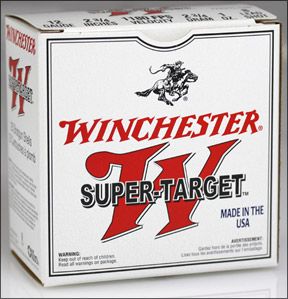
The trap load was heavier, but neither generated uncomfortable recoil. Both burned clean, with comparable performance in both shotguns. Heres what our testers learned about the guns:
H&R Pardner Pump-Action 12-Gauge
Pump Shotgun, $200
When we purchased this shotgun, we grumbled that it was not on sale and cost twenty extra bucks. After the test, the primary rater decided he would not sell this shotgun. We didnt pay much, and it would not command a good trade in on the next project. We did not cherry pick a Pardner, we brought home an example wrapped in plastic. The clerk opened the box, confirmed the serial number, and we were on our way. This was the second shotgun in line to be tested, so the Maverick was fresh in our mind. We did individual tests but also fired them against each other.
The fit and finish of the Pardner were good, our team said. The blue on the receiver was, more or less, equal to the Maverick, while the Pardners barrel was matte finished. Some of us prefer blue steel and walnut. The wood used in the Pardner was a contrast to the synthetic stock on the Maverick. The fit to the metal was good. The forend was good and tight. The recoil pad was a webbed type that absorbed recoil well. The barrel rib was well done with a single bead. A plus for turkey hunters or short-range deer hunters was that the Pardner is drilled and tapped for a scope mount. That would be a tie breaker for some buyers.
Elsewhere, the trigger of the Pardner was crisp enough and broke at 5 pounds. When loading and firing, we encountered no surprises. The firing tests went well. Even with heavy trap loads, the recoil pad did a good job of diminishing felt recoil.
We had a minor complaint from some of the raters, and this depended upon shooting style. The top of the stock was a bit sharp, and while never painful, it could have been better designed. Otherwise, the Pardner was very comfortable to fire.
The crossbolt safety was located in the rear of the trigger guard. This was ideal for rapid manipulation
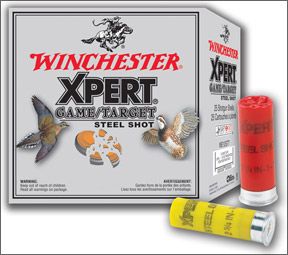
and may be managed by a left handed shooter with a little practice.
Our Team Said: We feel that the Pardner was designed to sell at a price point most people could afford, and H&R and their Chinese contractors have done a good job on the gun. When both are on sale at Academy Sports, the $10 in price differential very much favors the Pardner. The fit and finish were good, although the receiver was a brighter blue than the matte finish barrel. This shotgun was handy to fire and use. The mechanical resemblance to the Remington was obvious, but the humpback receiver gives the Pardner a distinctive appearance. For the price, we could not register a complaint. The superior safety, the ability to mount a scope, the superior recoil pad, and the well-fitted wood furniture were advantages that easily gave the Pardner a win over the Maverick.
Maverick Model 88 12 Gauge Pump Action, $170
The Mossberg 500 is a very successful pump-action shotgun, competing mainly against the Remington 870. The Mossberg has seen extensive police and military use, but its primary use has been in the hunting and game fields. To produce a competitively priced shotgun, Mossberg opened a plant in Texas to produce the Maverick from parts produced in Mexico. Accordingly, the Maverick differs from the Mossberg in several respects. The original Mossberg features a safety that is located on the top of the receiver hump, ideal for rapid manipulation. The Maverick features a crossbolt safety in front of the trigger guard. The Mavericks trigger group is housed in plastic rather than aluminum or steel. The crossbolt worked OK, our testers said, but they added that it is a pain for left-handed shooters.
The physical details of the Maverick in cant, drop, and pitch are similar to the Mossberg. Pitch and cast are more important with an expensive trap gun. Pitch is the angle of the stock to the bore line or center of the bore. Both shotguns had practically neutral pitch. With this type of pitch your eye sits on the stock, and you do not have to raise your head to address the bead sight- that is also another function of the barrel rib. Cast is the angle of the stock to the receiver- cast left is cast on and cast right is cast off, traditionally. Both guns stocks were neutral in this regard, as the majority of pump-action shotguns will be.
The synthetic stock was well done for the type, with a good fit. The fore end was looser than we like, and the arrangement that pins the action bars to the forend was not attractive. Some may wish to upgrade the fore end, and it is not an easy task. Earlier Maverick shotguns were delivered with single-action bars. The present dual-action bars are an improvement in strength and smoothness, but they make changing the fore end troublesome.
The stock is comfortable and fits average hands well. The barrel rib features dual beads, one in the front and one about middle of the rib toward the receiver. The recoil pad is a marginal solid design. The blue finish is comparable to more expensive shotguns.
In loading and firing the Maverick, we found no surprises. The action is smooth enough, and we felt no binding. Our shooters thumbed shells into the magazine easily, and the firing process went smoothly. The trigger broke heavy at 6.25 pounds. Most raters commented that the action was smooth, but the fore end had wobble in it.
Getting the shotgun mounted quickly and making hits was not a problem for experienced shotgunners, but the manipulation in between- operating the action with a loose fore end-was not ideal. Still, this was a budget shotgun, and it worked.
Our Team Said: The Mossberg is OK, but there were some things we did not like. We did not like a crossbolt safety in front of the trigger guard, but we would live with it if we were not aware of the existence of other types. We do not know how much was saved in production costs compared to the Mossberg, but this was not a good change. The dual beads are a nice touch, and the firing test was trouble free. We feel that we got our moneys worth.

























